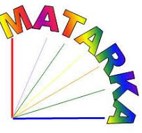Parlagok és természetvédelmi célú gyepesítések értékelése Ásotthalom, Tiszaalpár és Kardoskút határában
Absztrakt
Három alföldi területen (Alpár-Bokrosi ártéri öblözet, Ásotthalmi Láprétek TT és Kardoskúti puszta) vizsgáltuk a természetvédelmi kezelők által végrehajtott gyepesítési kísérleteket. Célunk az volt, hogy a spontán regenerációt, illetve a lucernával, valamint kommersz fűmaggal való bevetés hatásosságát természetvédelmi szempontból értékeljük. Öt lokalitásban, összesen 13 gyepesített- és 5 referencia-területen készítettünk cönológiai felvételeket. A felvételeket a természetességre utaló fajok száma és összborítása alapján értékeltük, figyelembe vettük a gyomok és a tájidegen fajok mennyiségét is. Megállapítottuk, hogy a spontán regeneráció már három év alatt a természeteshez közeli állapotot képes létrehozni, ha a talajvízszint a felszín közelében van. A kereskedelemben jelenleg kapható, intenzív gyepgazdálkodás céljából előállított gyepvetőmag keverékek nem segítették a regenerációt, és a lucerna vetése sem javasolható, mert évekig akadályozza a természetes gyepfajok betelepülését. Eredményeink szerint a spontán regenerációt kell előnyben részesíteni természetvédelmi célú gyepesítés esetén. Elméleti és gyakorlati szempontból egyaránt fontosnak tartjuk, hogy minél több természetvédelmi célú beavatkozás értékelését elvégezzük.
Hivatkozások
Bagi, I. & Székely, Á. (2006): Az Elymus elongatus (Host) Runemark, magas tarackbúza előfordulása a Kiskunság déli részén. A korábbi lelőhelyek rövid áttekintése. Bot. Közlem. 93: 77–92.
Bartha, S. (2002): Az ökológiai restaurációt megalapozó vegetációdinamikai kutatások. In: Fekete G.: Az MTA Ökológiai és Botanikai Kutatóintézete 50 éve (1952-2002). MTA ÖBKI, Vácrátót, pp. 182–198.
Bazzaz, F.A. (1979): The physiological ecology of plant succession. - Ann. Rev. Ecol. Syst. 10: 351–371.
Borhidi, A. (1993): A magyar flóra szociális magatartás típusai, természetességi és relatív ökológiai értékszámai JPTE Növénytani Tanszék, Pécs. 94 pp.
Cramer, V. A, Hobbs, R. J. & Standish, R. J. (2007): What’s new about old fields? Land abandonment and ecosystem assembly – TREE 23: 104–112.
Csecserits, A., Szabó, R., & Halassy, M. (2007): Testing the validity of successional predictions on an old-field chronosequence in Hungary. Comm. Ecol. 8: 195–207.
Halassy, M. (2001): Possible role of the seed bank in restoration of open sandgrassland in old fields. – Comm. Ecol. 2: 101–108.
Horváth, A. & Szemán, L. (szerk.) (2008): Természetbarát gyeptelepítési útmutató. Ökológiai és technológiai szempontok az Új Magyarország Vidékfejlesztési Program keretében magvalósítandó gyeptelepítési tervek számára. - MTA ÖBKI, Vácrátót. pp.40.
Kelemen, J. (szerk.) (1997): Irányelvek a füves területek természetvédelmi szempontú kezeléséhez. A KTM TvH tanulmánykötetei 4. TermészetBúvár Alapítvány Kiadó, Budapest.
Molnár, Zs. (1997): Másodlagos löszpusztagyepek fejlődése dél-tiszántúli felhagyott szántókon IIii. Trendek és variációk. Puszta 1/14: 80–95.
Molnár, Zs. & Bíró, M. (1996): Vegetation hystory of the Kardoskút area (S.E. Hungary) I.: regional versus local history, ancient versus recenrt habitats. Tiscia 30: 15–26.
Pickett, S. T. A., Collins, S. L. & Armesto, J. J. (1987): Models, Mechanisms and Pathways of Succession. The Botanical Review 53: 335–371.
Ruprecht, E. (2006): Succesfully recovered grassland: a promising example from Romanian old-fields. Rest. Ecol. 14: 473–480.
Simon, T. (2000): A magyarországi edényes flóra határozója. Harasztok – virágos növények. Nemzeti Tankönyvkiadó, Budapest. 846 pp.
Szabó, R., Halassy, M., Csecserits, A., & Török, K.(2008): Restoration of pannonic sandy grassland habitat on abandoned agricultural fields. Proceedings of the 6th European Conference on Ecological Restoration. Extended abstracts 1-4. CD.
Virágh, K. & Kun, A. (szerk.) (2000): Vegetáció és dinamizmus. MTA ÖBKI Vácrátót. 255 pp.






